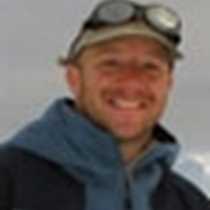St. Kilda, Stones of Callanish
Coming off of a beautiful sunset viewing of orcas the night before under a bright, full moon, we arose this morning to find ourselves arriving at the archipelago of St. Kilda. High up in Scotland’s Outer Hebrides, this archipelago is the most northwesterly and remote of the British Isles. It has some of the largest sea bird colonies in the North Atlantic, and we woke early to pass by the stack of Boreray that teemed with nests of sea birds, sighting many different birds for our wildlife journal. The seas were a little choppy as we landed on the largest island called Hirta, but once again the weather was spectacular for our morning ashore. On Hirta, the remains of a 19th century village still stand and there are over 1,400 stone-built cleitean structures for storing food and fuel scattered all over the islands. We walked amongst these buildings that have been restored by the National Trust for Scotland, and some of the group also hiked up to the high “Gap,” offering tremendous views of the cliff side terrain and the local sea birds.
After our return to ship, we set out to sea again for a calm afternoon of lectures by our specialists on board. Bob Krist, our National Geographic Photographer on the trip, gave a humorous talk describing the adventures behind the scenes of working photography assignments for the National Geographic Magazine. Bob was followed by our Scottish historian Steve Blamires who shared with us a terrific explanation of Scottish background and history.
While we ate our dinner, the National Geographic Endeavour dropped anchor in the Loch Roag for our exciting evening visit to the famous Stones of Callanish on the Isle of Lewis.
With our tummies sated by dinner, we all piled into the boats for a 2.5 mile Zodiac ride to the ancient hilltop site of monolithic stones at sunset. Ice crystals in the sky generated rainbow sun dogs around the setting sun, adding to the enchanted, mystic feeling of this nearly 5000 year old site. We walked around this cluster of 1-5 meter high stones and peered down the avenues and lines of stones radiating out from the central circle. Some studies have shown particular lunar alignments with these stones, suggesting the site may have had an original purpose as a calendar device. It may also have been used for other purposes throughout the ages, as excavation has revealed a burial chamber underneath the tallest, central stone, and other nearby buildings and debris. At last, we rode back from Callanish in the chilled evening air, stopping along the way for a hot chocolate warm-up brought out by our friends of the crew in a Zodiac. What a fine, final treat this was to put smiles on our faces as we continued our way home to the National Geographic Endeavour and at last to bed.
Coming off of a beautiful sunset viewing of orcas the night before under a bright, full moon, we arose this morning to find ourselves arriving at the archipelago of St. Kilda. High up in Scotland’s Outer Hebrides, this archipelago is the most northwesterly and remote of the British Isles. It has some of the largest sea bird colonies in the North Atlantic, and we woke early to pass by the stack of Boreray that teemed with nests of sea birds, sighting many different birds for our wildlife journal. The seas were a little choppy as we landed on the largest island called Hirta, but once again the weather was spectacular for our morning ashore. On Hirta, the remains of a 19th century village still stand and there are over 1,400 stone-built cleitean structures for storing food and fuel scattered all over the islands. We walked amongst these buildings that have been restored by the National Trust for Scotland, and some of the group also hiked up to the high “Gap,” offering tremendous views of the cliff side terrain and the local sea birds.
After our return to ship, we set out to sea again for a calm afternoon of lectures by our specialists on board. Bob Krist, our National Geographic Photographer on the trip, gave a humorous talk describing the adventures behind the scenes of working photography assignments for the National Geographic Magazine. Bob was followed by our Scottish historian Steve Blamires who shared with us a terrific explanation of Scottish background and history.
While we ate our dinner, the National Geographic Endeavour dropped anchor in the Loch Roag for our exciting evening visit to the famous Stones of Callanish on the Isle of Lewis.
With our tummies sated by dinner, we all piled into the boats for a 2.5 mile Zodiac ride to the ancient hilltop site of monolithic stones at sunset. Ice crystals in the sky generated rainbow sun dogs around the setting sun, adding to the enchanted, mystic feeling of this nearly 5000 year old site. We walked around this cluster of 1-5 meter high stones and peered down the avenues and lines of stones radiating out from the central circle. Some studies have shown particular lunar alignments with these stones, suggesting the site may have had an original purpose as a calendar device. It may also have been used for other purposes throughout the ages, as excavation has revealed a burial chamber underneath the tallest, central stone, and other nearby buildings and debris. At last, we rode back from Callanish in the chilled evening air, stopping along the way for a hot chocolate warm-up brought out by our friends of the crew in a Zodiac. What a fine, final treat this was to put smiles on our faces as we continued our way home to the National Geographic Endeavour and at last to bed.




